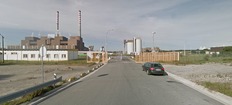- The GreenH2Atlantic project in Sines, Portugal, has been granted PIN status.
- The project involves a €150M investment, with €30M from the EU Horizon 2020 programme.
- The plant will have a 100MW electrolyzer capacity, repurposing a former coal power plant.
- Operation is planned to start by the end of 2025, creating 3,891 jobs.

Project Overview
The GreenH2Atlantic project in Sines, Portugal, has been granted PIN (Potential National Interest) status. This recognition by AICEP highlights the project's strategic importance for Portugal, including factors like strategic investment, job creation, and commitment to innovation and energy transition from renewable sources.
Investment and Infrastructure
The project involves a total investment of over €150 million, with €30 million granted by the European Commission's Horizon 2020 programme. The green hydrogen production plant will repurpose infrastructures from Portugal's largest coal power plant, which ceased operations in January 2021, into a facility with a 100MW installed electrolyzer capacity.
Key Players and Timeline
GreenH2Atlantic is developed by multinational companies such as EDP, Galp, ENGIE, Bondalti, Martifer, and Vestas Wind Systems A/S, with participation from McPhy, Efacec, and academic and research partners like ISQ, INESC-TEC, DLR, and CEA. The public-private cluster Axelera is also involved. The final investment decision is expected by the end of 2023, with project operations planned to start by the end of 2025.
Economic and Environmental Impact
The project aims to create 1,147 direct jobs and 2,744 indirect jobs along the hydrogen value chain. It supports both national and European decarbonization goals, contributing to the European hydrogen strategy aimed at achieving carbon neutrality by 2050. The status attribution ensures closer monitoring and streamlined processes for necessary licensing, authorizations, and approvals.
Green Hydrogen Production
Green hydrogen is produced by splitting water molecules through electrolysis, using electricity generated from renewable sources. It is recognized as a key component in building a green economy and decarbonizing hard-to-abate sectors, offering a viable alternative to reduce energy dependence on foreign sources.

